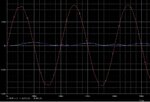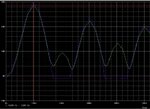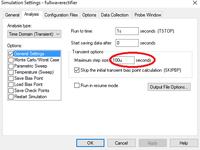Arif Syazwan
Newbie level 6
I am attempting to design a Full-Wave Bridge Rectifier using Orcad Pspice 16.6

Vrms = 240(339.5Vm) at 50Hz and the transformer should produce 110Vrms(155.56Vm)
L1 = 20H
L2 = 4H
K = 1
But the simulation result for Voutput = 29V is less than 155.56V


Here is my calculation for rectifier
Vm=sqrt * 110 = 155.56V
Vdc = 2 * Vm / pi = 99V
R = 155.56^2 / 4000w = 6 ohm
Vripple = Vm * 5%
C = 1/ (2*sqrt3 * (50) * (6) * (7.8)) = 123.4uF
Is there something I'm missing here?

Vrms = 240(339.5Vm) at 50Hz and the transformer should produce 110Vrms(155.56Vm)
L1 = 20H
L2 = 4H
K = 1
But the simulation result for Voutput = 29V is less than 155.56V


Here is my calculation for rectifier
Vm=sqrt * 110 = 155.56V
Vdc = 2 * Vm / pi = 99V
R = 155.56^2 / 4000w = 6 ohm
Vripple = Vm * 5%
C = 1/ (2*sqrt3 * (50) * (6) * (7.8)) = 123.4uF
Is there something I'm missing here?




